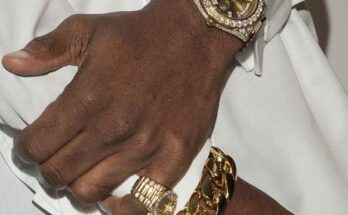Let’s pretend you’re looking at a picture on the internet. This may be a picture from social media or an online dating profile. Maybe a picture from a news story? Something doesn’t add up when you look at it, and you’re skeptical. How can you know whether the picture is genuine?
Many internet scammers and identity thieves take people’s pictures and use them to impersonate them. So that attractive blonde lady you’re admiring on Tinder might be a huge obese Russian dude in St Petersburg attempting to get your bank account information. It pays to stay secure in this day and age, and there are a few internet services that can assist you.
Google Image
Google isn’t the only major search engine that can look for images in reverse order. It’s also available on Bing and Yandex. But, of course, the big G will be everyone’s first port of call.
⇒Join us on Telegram for more Sure and Accurate football-winning tips every day...click here
Let’s pretend you were scrolling on Tinder and came across this gorgeous guy.
He claims to be a wealthy Italian entrepreneur named Luigi. But wait, doesn’t he look like someone you know? Isn’t he in a movie somewhere? Maybe he’s the man that delivers pizzas in the neighborhood.
You may submit pictures to Google Images and check whether they get any hits. Click on the camera icon in Google Images.
You then have two choices: put in the exact URL of the picture if it is online, or upload the photo. You may also upload it straight to Google if it’s on your computer or mobile device.
I selected “Upload an image” and then went to the picture in Windows Explorer, where it began to upload.
Google immediately recognized “Luigi the wealthy Italian entrepreneur” as a lowlife con artist named “Hugh Jackman,” who claims to be a “actor.” Whew, that was a close call! We’re all familiar with these actor types.
TinEye
TinEye is another reverse image search engine that has an excellent track record of completing tasks. They will scan pictures you provide them for a fee and send you email notifications if such images surface online unexpectedly someplace else.
TinEye, on the other hand, is not particularly good with people’s faces, even if such individuals are prominent in Google search results, such as Hugh the actor. TinEye, on the other hand, concentrates on more generic pictures like artwork, private assets like photography and designs, and the like. This may be your best option if you’re an artist seeking to safeguard your work from internet plagiarists.
Let’s suppose someone gave me this “unique newly-painted” artwork for sale, but I have a feeling it wasn’t recently painted and has been around for a long.
TinEye immediately returns almost 13,000 hits, describing it as “American Gothic.” According to a brief internet search, it is by Grant Wood and is on display at the Art Institute of Chicago. So there was another near call that was avoided.
Conclusion
Reverse image search isn’t without flaws. There are many factors that may alter the appearance of a photograph, including hair color, the addition or removal of spectacles or facial hair, the tone of the image, and so on. There are photos of myself on the internet, but a reverse image search didn’t turn up many.
Reverse image search capabilities will be improved for police, attorneys, and private investigators. But, for the average Joe, we have to make due with what we have, which is something that can only become better with time.




